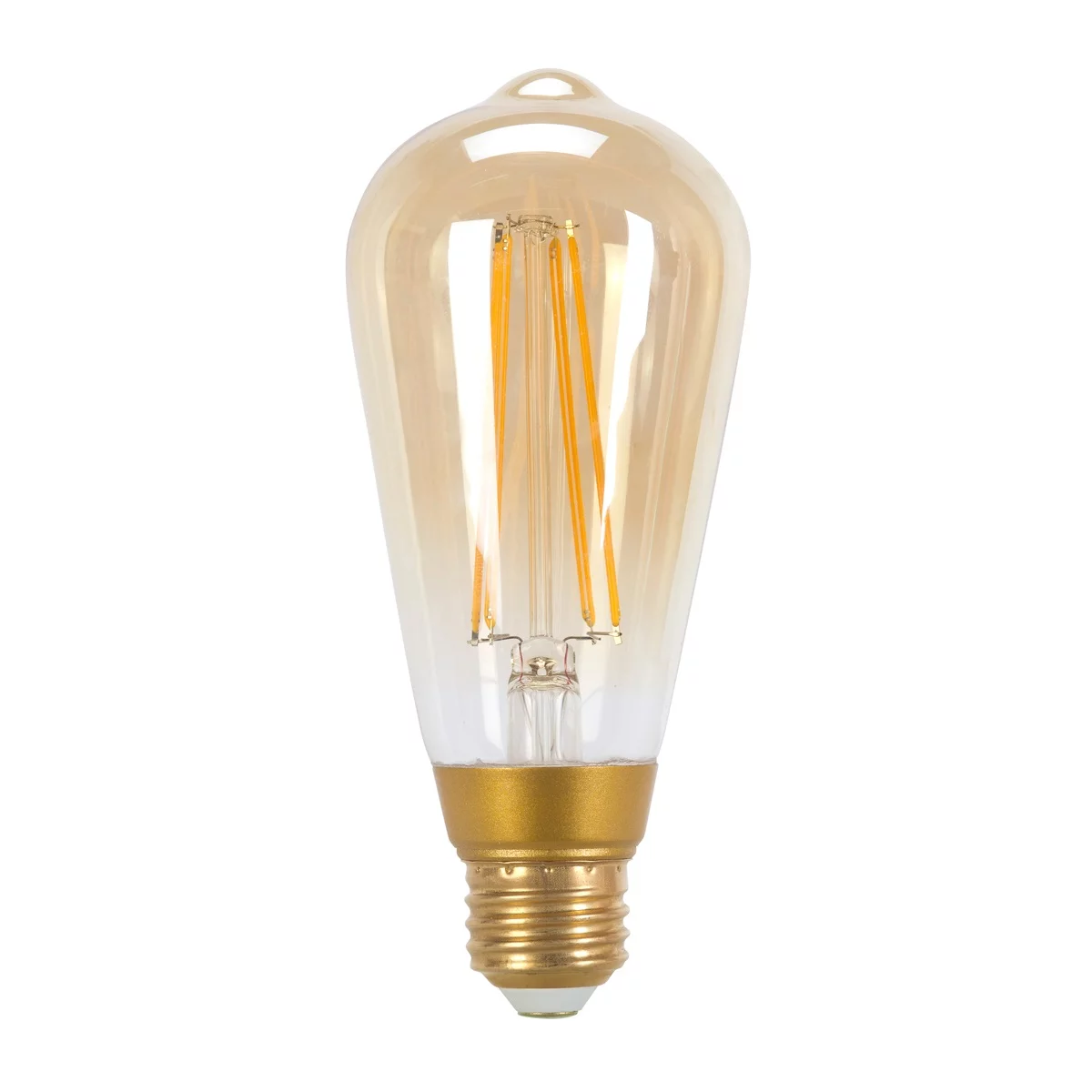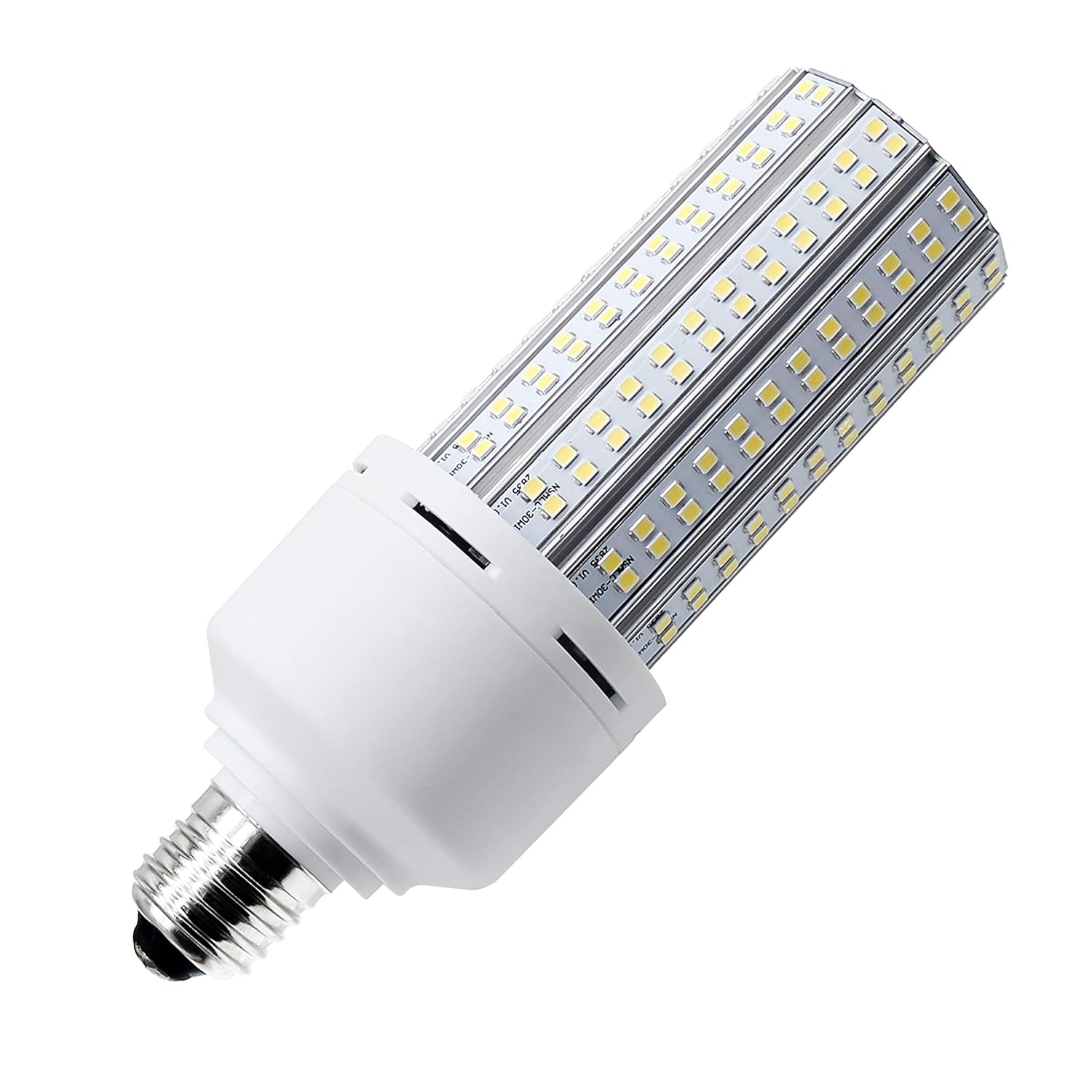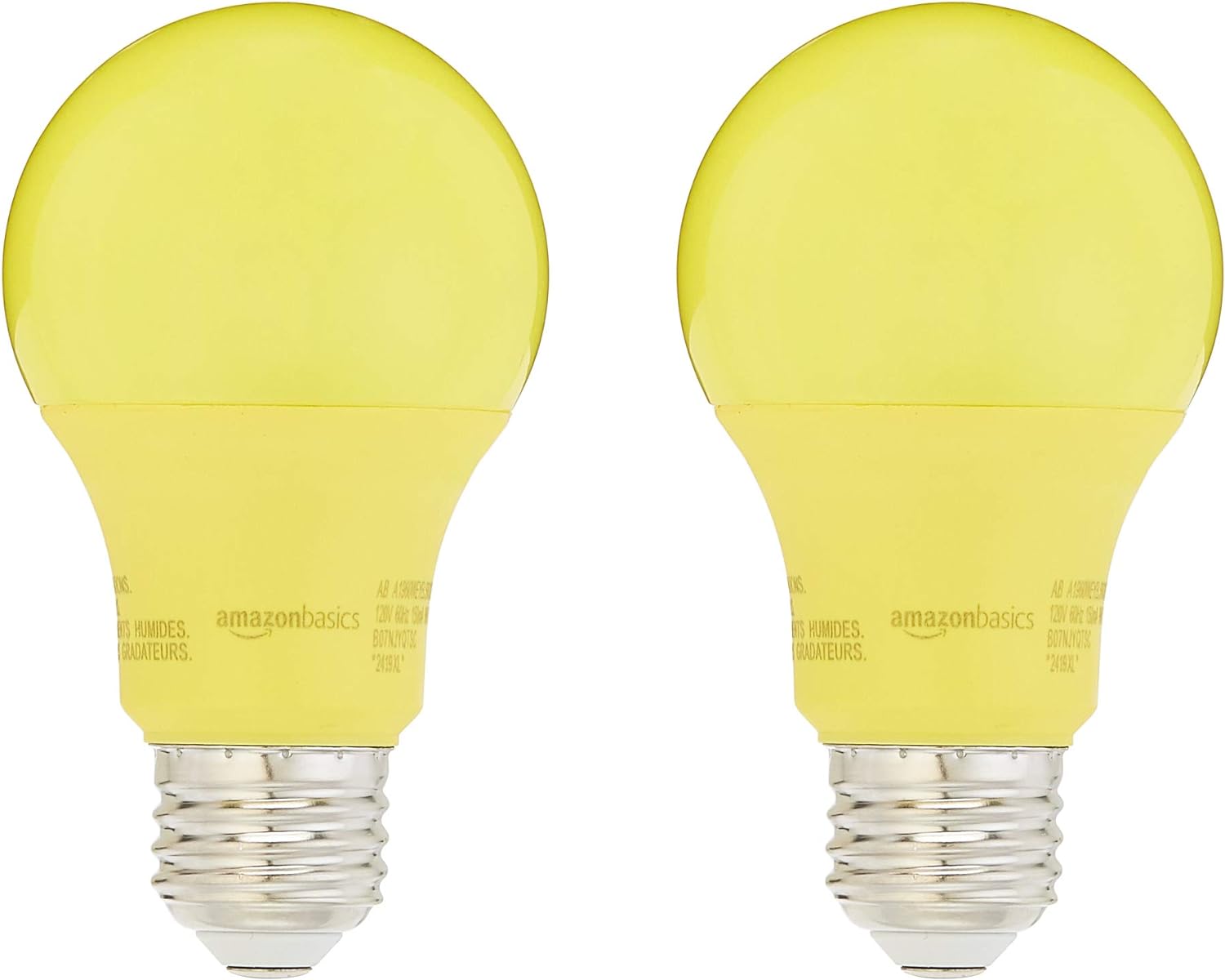

Articles
How Many Lumens In A 60-Watt LED Bulb
Modified: August 19, 2024
Discover how many lumens are in a 60 watt LED bulb in this informative article. Learn about the brightness and efficiency of LED lighting.
(Many of the links in this article redirect to a specific reviewed product. Your purchase of these products through affiliate links helps to generate commission for Storables.com, at no extra cost. Learn more)
Introduction
Welcome to the world of LED bulbs, where energy efficiency and brightness go hand in hand. If you’re in the market for a new LED bulb, you may have come across the term “lumens” while trying to make an informed decision. Understanding lumens is crucial to ensure you select the right bulb for your needs.
Lumens are a unit of measurement that quantifies the amount of light emitted by a light source. In simpler terms, lumens indicate how bright a bulb is. The higher the lumens, the brighter the light. Gone are the days when wattage was used as a determining factor for brightness. Thanks to advancements in LED technology, we now have more energy-efficient bulbs that produce higher lumens while consuming less energy.
In this article, we’ll explore the relationship between wattage and lumens and answer the frequently asked question, “How many lumens are in a 60-watt LED bulb?” We’ll also discuss other factors to consider when choosing a bulb, so you can make an informed decision based on your lighting requirements.
Key Takeaways:
- LED bulbs are measured in lumens, not wattage, for brightness. A 60-watt equivalent LED bulb typically produces 800-1000 lumens, offering the same brightness as a traditional bulb with significantly lower energy consumption.
- Consider factors like color temperature, dimmability, and beam angle when choosing LED bulbs to optimize lighting and create the desired ambiance while maximizing energy savings and durability.
Understanding Lumens
To fully understand lumens, we need to start by debunking the misconception that wattage is a measure of brightness. In the past, wattage was used to determine the brightness of a bulb because traditional incandescent bulbs all had a similar level of efficiency. However, with the advent of energy-efficient lighting options such as LED bulbs, this correlation no longer holds true.
Lumens, on the other hand, directly measure the amount of light produced by a bulb. The higher the number of lumens, the brighter the light. This means that a bulb with a higher lumen count will provide more illumination in a given space compared to a bulb with a lower lumen count.
One important thing to note is that lumens are an objective measurement of brightness, whereas wattage is a measure of the amount of power consumed by the bulb. This distinction is essential because different types of bulbs can produce the same amount of light while consuming different amounts of energy. LED bulbs, for instance, can produce the same level of brightness as an incandescent or fluorescent bulb while consuming significantly less energy.
To make it easier to choose the right bulb, manufacturers now include a “lumen output” or “brightness” rating on LED bulb packaging. This rating provides a standardized measurement to help consumers determine the level of brightness a bulb will provide. With this information, you can confidently select a bulb that meets your lighting needs without relying solely on wattage as an indicator.
Now that we have a better understanding of lumens and their significance in determining the brightness of a bulb, let’s dive into the relationship between wattage and lumens to answer the question at hand.
Wattage and Lumens
In the past, wattage served as a general indicator of a bulb’s brightness. The higher the wattage, the brighter the light produced. However, with the emergence of more energy-efficient lighting technologies, such as LED bulbs, this traditional correlation no longer holds true.
Wattage is a measure of the power consumption of a bulb, indicating how much energy it requires to operate. In the case of incandescent bulbs, the majority of the energy consumed is converted into heat rather than light. This is why incandescent bulbs are less efficient and produce lower lumens for the amount of wattage they consume.
On the other hand, LED bulbs are designed to be highly energy-efficient. They convert a larger percentage of the electrical energy they consume into light rather than heat. This means that LED bulbs can produce the same level of brightness or even higher lumens compared to traditional bulbs while consuming significantly less wattage.
For example, a traditional 60-watt incandescent bulb typically produces around 800 lumens of brightness. In contrast, an LED bulb with the same lumen output may only consume around 10-12 watts of power. This drastic difference showcases the efficiency of LED technology and its ability to provide equivalent or even higher brightness levels with lower wattage consumption.
It’s important to note that the relationship between wattage and lumens is not a linear one. As technology advances, LED bulbs are becoming even more efficient, producing more lumens while consuming fewer watts. This means that you can achieve the same level of brightness as a higher-wattage incandescent bulb with a lower-wattage LED bulb.
Now that we have a clear understanding of the relationship between wattage and lumens, let’s delve into how many lumens you can expect from a 60-watt LED bulb.
A 60 watt LED bulb typically produces around 800-1000 lumens, which is equivalent to the light output of a traditional 60 watt incandescent bulb.
Lumens in a 60 Watt LED Bulb
Now that we understand the concept of lumens and their relation to wattage, let’s address the question of how many lumens are in a 60-watt LED bulb. While the wattage of a bulb gives an indication of how much power it consumes, it does not directly correlate to the brightness or lumen output of an LED bulb.
The lumen output of an LED bulb will vary depending on the specific make and model. However, on average, a 60-watt equivalent LED bulb will produce around 800-1000 lumens. This means that it will provide the same level of brightness as a traditional 60-watt incandescent bulb but with a significantly lower energy consumption.
It’s essential to check the packaging or product specifications of the LED bulb you are considering to determine its specific lumen output. This information will help you gauge the brightness and ensure it meets your lighting requirements. Some LED bulbs may have a slightly lower or higher lumen output, so it’s always best to verify the specifications to make an informed decision.
It’s also worth mentioning that LED technology continues to advance, resulting in bulbs with higher lumen outputs and even more energy efficiency. So, while a 60-watt LED bulb may currently offer an average of 800-1000 lumens, it’s possible that future LED bulbs will provide even higher brightness levels while consuming even less energy.
When choosing a 60-watt LED bulb, consider factors such as the intended use of the light, the size of the room, and personal preference for brightness. If you require a brighter light for tasks or larger spaces, you may opt for an LED bulb with a higher lumen output, such as 1000 lumens or more. Conversely, for areas that require a softer and more ambient light, a lower lumen output may suffice.
By understanding the lumen output of a 60-watt equivalent LED bulb, you can make an informed decision and select the right bulb for your specific lighting needs.
Other Factors to Consider
While lumens play a significant role in determining the brightness of a bulb, there are other factors to consider when choosing an LED bulb for your lighting needs. These factors can help you optimize the lighting in your space and create the desired ambiance.
Color Temperature: LED bulbs come in different color temperatures, measured in Kelvin (K). The color temperature affects the perceived “warmth” or “coolness” of the light. Lower color temperatures, such as 2700K to 3000K, produce a warm, yellowish light, reminiscent of traditional incandescent bulbs. Higher color temperatures, like 5000K to 6500K, produce a cool, bluish light, similar to daylight. Consider the atmosphere you want to create in your space and choose a color temperature that aligns with your preferences.
Dimmability: Some LED bulbs are dimmable, allowing you to adjust the brightness according to your needs and mood. If you require the ability to dim the lights, ensure that you select LED bulbs that are specifically labeled as dimmable. Additionally, check compatibility with your existing dimmer switch or consider investing in a dimmer switch that is compatible with LED bulbs.
Beam Angle: The beam angle determines the spread of the light emitted by the bulb. A narrow beam angle, typically around 15-30 degrees, is ideal for focused task lighting or accentuating specific areas. A wider beam angle, around 40-60 degrees, provides a broader spread of light, suitable for general illumination. Consider the intended use and placement of the bulb to select a beam angle that suits your lighting requirements.
Energy Efficiency: LED bulbs are already renowned for their energy efficiency, but it’s still worth comparing the energy-saving capabilities of different bulbs. Look for LED bulbs that are ENERGY STAR certified, as these meet strict energy efficiency guidelines and provide long-lasting performance.
Brand and Quality: When purchasing LED bulbs, it’s advisable to opt for reputable brands or manufacturers known for their quality and reliability. Quality LED bulbs not only provide better performance and durability but also often come with longer warranties, giving you peace of mind in your purchase.
Cost: LED bulbs tend to have a higher upfront cost compared to traditional incandescent bulbs, but they offer significant energy savings and a longer lifespan. Evaluate the long-term benefits and savings you’ll gain from using LED bulbs, considering factors like energy efficiency and durability, when comparing prices.
By considering these additional factors alongside lumens, you can select LED bulbs that provide the desired brightness, color temperature, and functionality for optimal lighting in your space.
Conclusion
Understanding lumens is essential when it comes to selecting the right LED bulb for your lighting needs. While wattage was traditionally used as an indicator of brightness, the advent of energy-efficient LED technology has shifted the focus to lumens as a more accurate measure of light output.
In the case of a 60-watt equivalent LED bulb, it typically produces around 800-1000 lumens, providing the same level of brightness as a traditional 60-watt incandescent bulb but with much lower energy consumption. However, it’s important to check the specific lumen output indicated on the packaging or product specifications of the LED bulb to ensure it meets your desired brightness requirements.
Additionally, consider other factors such as color temperature, dimmability, beam angle, energy efficiency, brand and quality, and cost when selecting LED bulbs. These factors can help you optimize the lighting in your space and create the desired ambiance while maximizing energy savings and durability.
LED technology continues to evolve, offering even higher lumens and greater energy efficiency. As a consumer, staying informed about the latest developments in LED lighting can help you make informed decisions and select the best bulbs for your specific needs.
So, the next time you’re in the market for an LED bulb, remember that lumens, along with other relevant factors, play a crucial role in determining the brightness, functionality, and overall performance of the bulb. By considering these factors and staying up-to-date with advancements in LED technology, you can make informed choices and illuminate your space with energy-efficient and visually appealing lighting solutions.
Frequently Asked Questions about How Many Lumens In A 60-Watt LED Bulb
Was this page helpful?
At Storables.com, we guarantee accurate and reliable information. Our content, validated by Expert Board Contributors, is crafted following stringent Editorial Policies. We're committed to providing you with well-researched, expert-backed insights for all your informational needs.















0 thoughts on “How Many Lumens In A 60-Watt LED Bulb”